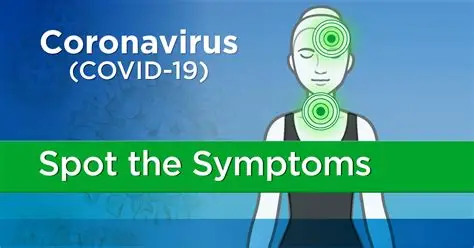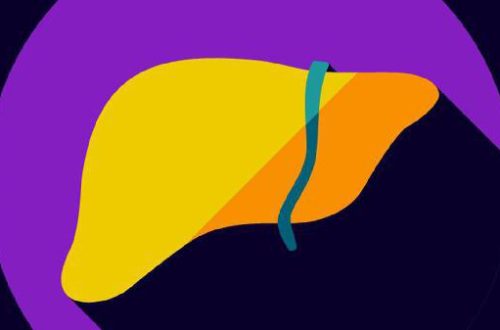
- COVID-19 Symptoms
- Types of Covid-19 Symptoms
- Warning Signs of COVID-19
- What Are the Symptoms of the Newest COVID-19 Variant?
- When to Get Tested for COVID-19
- How to Check for Fever
- What Kind of Cough Is Common in People With Coronavirus?
- What to Do if You Think You Have Mild Symptoms
- What Does Shortness of Breath Feel Like?
- Is It COVID-19, the Flu, a Cold, or Allergies?
- How to Protect Yourself
- Caring for Someone Who Has COVID-19 Symptoms
- Takeaways
- COVID-19 Symptoms FAQs
What Is COVID-19?
COVID-19 is a respiratory illness caused by the novel coronavirus (SARS-CoV-2). While some people with the virus have no symptoms at all (known as asymptomatic infection), most experience mild symptoms and recover without medical intervention. However, others develop severe complications—such as difficulty breathing—with higher risks for older adults or those with underlying health conditions (e.g., diabetes, heart disease).
Below is a detailed breakdown of COVID-19 symptoms, how to identify them, and what to do if you or someone you know is affected.
Types of COVID-19 Symptoms
COVID-19 symptoms range from mild to life-threatening, and anyone—regardless of age or underlying health—can experience severe symptoms. They are typically categorized as common, emergency, or less common.
1. Common COVID-19 Symptoms
The most frequently reported symptoms of COVID-19 include:
- Fever or chills
- Dry cough and shortness of breath
- Extreme fatigue
- Muscle or body aches
- Headache
- Loss of taste or smell (often without nasal congestion)
- Sore throat
- Nasal congestion or runny nose
- Nausea or vomiting
- Diarrhea
These symptoms usually appear 2 to 14 days after exposure to the virus.
2. Emergency COVID-19 Symptoms
Seek immediate medical attention if you or someone else has any of the following signs—they may indicate severe illness:
- Difficulty breathing or shortness of breath (even at rest)
- Persistent chest pain or pressure
- Bluish discoloration of the lips, face, or nail beds (a sign of low oxygen)
- Sudden confusion or disorientation
- Difficulty staying awake or inability to wake up
- Pale, gray, or ashen skin
Before visiting a doctor or hospital, call ahead to notify staff. This helps them prepare for your arrival, protect medical workers, and prevent the spread of the virus to others.
3. COVID-19 and Stroke Risk
Some COVID-19 patients have reported strokes. To quickly identify stroke signs, remember the FAST acronym:
- Face: Is one side of the face numb or drooping? Does the smile look lopsided?
- Arms: Is one arm weak or numb? When raising both arms, does one sag?
- Speech: Is speech slurred or unclear? Can the person repeat a simple sentence (e.g., “The sky is blue”)?
- Time: Every minute matters—call emergency services (e.g., 911 in the U.S.) immediately if any of these signs are present.
4. Less Common COVID-19 Symptoms
The virus can also cause rare or less typical issues, including:
- Conjunctivitis (pink eye) or swollen eyes
- Fainting (syncope)
- Guillain-Barré syndrome (a rare neurological disorder causing muscle weakness)
- Coughing up blood
- Blood clots (which may lead to deep vein thrombosis or pulmonary embolism)
- Seizures
- Heart damage (e.g., myocarditis)
- Kidney or liver damage
Some patients—including children—have developed rashes linked to COVID-19. These may appear as purple/blue lesions on lighter skin or pale/gray spots on darker skin. Researchers continue to study these rashes to understand their full connection to the virus.
COVID-19 Symptoms in Children
Children often experience the same symptoms as adults but with milder intensity. Many kids have no symptoms at all but can still spread the virus to others.
Common Pediatric Symptoms
- Fever
- Cough
- Shortness of breath
Pediatric Multisystem Inflammatory Syndrome (PMIS)
A small number of children and teens hospitalized with COVID-19 develop PMIS—a serious inflammatory condition linked to the virus. Symptoms include:
- Persistent fever
- Rash
- Abdominal pain, vomiting, or diarrhea
- Heart complications (e.g., low blood pressure, abnormal heart rhythms)
PMIS is similar to toxic shock syndrome and Kawasaki disease (a condition causing blood vessel inflammation in children). It requires immediate medical treatment.
Early Warning Signs of COVID-19
Certain symptoms may appear before more obvious signs (e.g., cough, fever). Key early warnings include:
- Digestive issues: Nausea, vomiting, or diarrhea may occur alone or before respiratory symptoms.
- Loss of taste or smell: This symptom—especially without nasal congestion—is a common early indicator. It typically resolves within 30 days but may last 60 days or longer in some cases.
Symptoms of New COVID-19 Variants
Most COVID-19 variants cause similar symptoms, but a few strains have slight differences:
| Variant | Key Symptoms |
|---|---|
| Omicron | Usually mild, resembling a cold: sore throat, runny nose, congestion. Lower respiratory symptoms (e.g., severe cough, wheezing, fever) are less common. |
| Delta | Fever, runny nose, sore throat, headache. Loss of taste/smell and coughing are less frequent than with earlier variants. |
Newer subvariants (e.g., Omicron EG.5) primarily affect the upper respiratory tract, causing cold-like symptoms. However, older adults (65+) and those with weakened immune systems remain at higher risk of severe lower respiratory illness.
When to Get Tested for COVID-19
Get tested if:
- You have any COVID-19 symptoms (even mild ones).
- You had close contact (e.g., within 6 feet for 15+ minutes) with someone who tested positive—test at least 5 days after your last exposure.
- You are instructed to test by your school, workplace, or local health department (regardless of vaccination status).
How to Check for Fever
Body temperature varies by person and throughout the day. Here’s how doctors define a fever:
| Age Group | Oral Thermometer | Rectal Thermometer |
|---|---|---|
| Adults | 100.4°F (38°C) or higher | 100.8°F (38.2°C) or higher |
| Children | 100°F (37.8°C) or higher | 100.4°F (38°C) or higher |
If you were exposed to the virus or have symptoms:
- Isolate yourself and check your temperature morning and evening for at least 10 days.
- Track your readings—note that COVID-19 fevers may sometimes be below 100°F (37.8°C).
What Kind of Cough Is Linked to COVID-19?
Most COVID-19 patients have a dry, chesty cough—meaning it does not produce mucus (phlegm) and is felt deep in the chest.
What to Do If You Have Mild COVID-19 Symptoms
If you experience mild symptoms (e.g., low-grade fever, mild cough, fatigue):
- Stay home unless you need medical care. If you must seek treatment, call your doctor or hospital first for guidance.
- Inform your doctor about your symptoms—especially if you are at high risk (e.g., older adults, immunocompromised individuals) for severe illness.
- Isolate yourself: Stay in a separate “sick room” and use a dedicated bathroom if possible. Avoid contact with household members.
- Wear a mask: If you must be around others, wear a well-fitting respirator mask (e.g., N95, KN95)—the CDC notes these offer better protection than cloth masks. If a mask restricts breathing, maintain a 6-foot distance and cover your mouth/nose when coughing/sneezing. Wash your hands with soap for 20+ seconds afterward.
- Rest and hydrate: Drink plenty of fluids and get adequate rest. Over-the-counter medications (e.g., acetaminophen for fever, cough suppressants) may ease discomfort.
- Monitor symptoms: If symptoms worsen (e.g., increased shortness of breath, chest pain), seek emergency care immediately.
What Does COVID-19-Related Shortness of Breath Feel Like?
Doctors use the term dyspnea to describe shortness of breath. COVID-19-related dyspnea may feel like:
- Chest tightness
- Inability to catch your breath or take deep breaths
- Feeling “smothered” or like you’re not getting enough air
- Needing to work harder than usual to breathe in/out
- Having to gasp for air before finishing a breath
Monitor your oxygen levels with a pulse oximeter. If your oxygen saturation drops to 80% or lower, contact your doctor. If your lips/face turn blue, call emergency services immediately.
How to Distinguish COVID-19 from Cold, Flu, or Allergies
COVID-19 shares symptoms with other respiratory illnesses, but key differences exist:
| Symptom | Cold | Flu | Allergies | COVID-19 |
|---|---|---|---|---|
| Fever | Rare | High (100–102°F), lasts 3–4 days | Never | Common |
| Headache | Rare | Intense | Uncommon | Common |
| Muscle/body aches | Slight | Severe, usual | Never | Common |
| Fatigue/weakness | Mild | Intense (lasts 2–3 weeks) | Sometimes | Common |
| Extreme exhaustion | Never | Usual (starts early) | Never | May occur |
| Stuffy/runny nose | Common | Sometimes | Common | Reported |
| Sneezing | Usual | Sometimes | Usual | Reported |
| Sore throat | Common | Common | Sometimes | Reported |
| Cough | Mild-moderate | Common (may turn severe) | Sometimes | Common (dry/chesty) |
| Shortness of breath | Rare | Rare | Rare (except allergic asthma) | Common in severe cases |
How to Protect Yourself from COVID-19
The CDC recommends the following to reduce infection risk:
1. Get Vaccinated
Everyone aged 5 and older should receive an updated COVID-19 vaccine to prevent severe illness. Three updated vaccines are available in the U.S.: Pfizer-BioNTech, Moderna, and Novavax.
Vaccine recommendations by age group:
- Ages 12+ (unvaccinated): 1 dose of Pfizer-BioNTech/Moderna, or 2 doses of Novavax.
- Ages 12+ (vaccinated before Sept 12, 2022): 1 dose of any updated vaccine.
- Ages 5–11 (any vaccination status): 1 dose of Pfizer-BioNTech/Moderna.
- Ages 6 months–4 years (unvaccinated): 2–3 doses of an updated vaccine (varies by type).
- Ages 6 months–4 years (vaccinated before Sept 12, 2023): 1–2 doses of an updated vaccine (varies by prior doses/type).
If you have a weakened immune system, consult your doctor before getting vaccinated.
2. Preventive Measures (Until Fully Vaccinated)
- Wash hands often with soap and water for 20+ seconds. Use a 60%+ alcohol-based hand sanitizer if soap/water are unavailable.
- Limit in-person contact with others. Maintain a 6-foot distance in public.
- Wear a well-fitting mask (e.g., N95, KN95) in crowded or indoor public spaces.
- Avoid close contact with sick people.
- Refrain from touching your eyes, nose, or mouth without clean hands.
- Regularly clean and disinfect high-touch surfaces (e.g., doorknobs, light switches, countertops).
Caring for Someone with COVID-19 Symptoms
To protect yourself while caring for a COVID-19 patient:
- Limit contact: Stay in separate rooms. If sharing a space, use a fan or open window to improve airflow.
- Wear masks: Ask the sick person to wear a well-fitting mask around you—wear one too.
- Avoid sharing items: Do not share electronics, bedding, dishes, or utensils.
- Use gloves: Wear disposable gloves when handling the patient’s dishes, laundry, or trash. Dispose of gloves after use and wash your hands immediately.
- Clean surfaces: Regularly disinfect high-touch areas (e.g., doorknobs, faucets).
- Care for yourself: Get enough rest and nutrition. Monitor your own health for COVID-19 symptoms.
Key Takeaways
- Severe COVID-19 symptoms are more common in older adults and those with underlying conditions but can affect anyone.
- If you have symptoms or were exposed, get tested promptly. Seek emergency care for severe signs (e.g., difficulty breathing, chest pain).
- Vaccination is the best way to prevent severe illness. Follow preventive measures (masks, hand hygiene, social distancing) until fully vaccinated.
COVID-19 Symptoms FAQs
What day do severe COVID-19 symptoms start?
Symptoms—whether mild or severe—typically appear 2 to 14 days after exposure to the virus. Severe symptoms may develop gradually or suddenly, often within the first week of illness.
When does COVID-19 peak in the body?
Viral load (active illness) usually peaks 1 to 2 weeks after symptom onset for most patients. In severe cases, this phase may last for months (a condition known as “long COVID”).
What are the symptoms of the newest COVID-19 variants?
Newer variants (e.g., Omicron EG.5) primarily cause upper respiratory symptoms similar to a cold: runny nose, sore throat, congestion. However, older adults (65+) and immunocompromised individuals remain at risk of severe lower respiratory symptoms (e.g., difficulty breathing, pneumonia).





